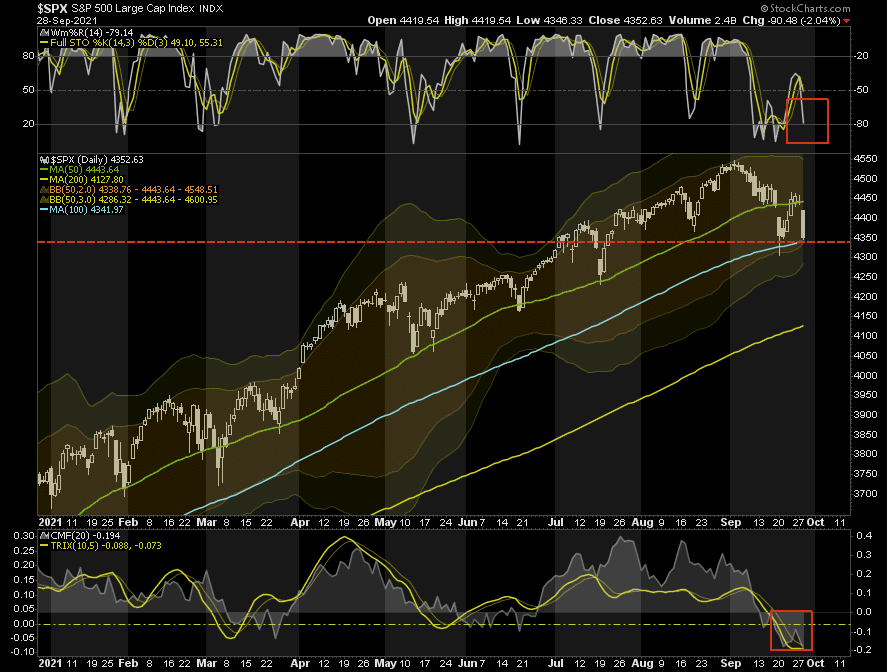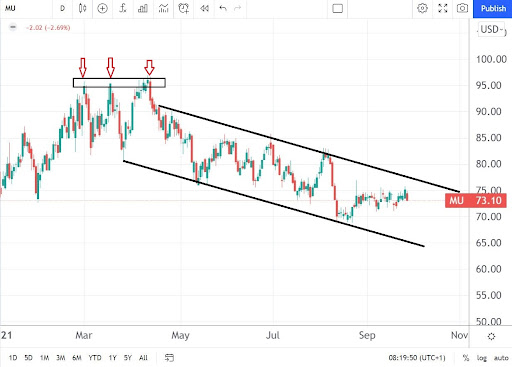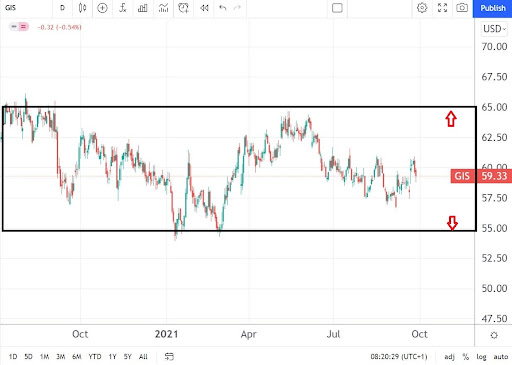Words For Wednesday: Dip Monday, Dead Cat Bounce, Dip Tuesday, Dead Cat Bounce?
Dip Monday (Sept. 20), Dead Cat Bounce, Dip Tuesday (Sept. 28), Dead Cat Bounce, Sept. 29? What a week and a half it's been thus far. With Tuesday's repeat of last Monday's correction what's in store for today, the start of a repeat dead cat bounce?

Heck, even the cat is frazzled.
Yesterday, the S&P 500 closed at 4,353, down 90 points or 2% for the day and almost exactly where it closed on Monday, Sept. 20 when it closed down at 4,358. The Dow closed at 34,300, down 569 points or 1.6% while the Nasdaq Composite closed at 14,546, down 423 points or 2.8%. On Sept. 20 it closed down at 14,713.

Chart: The New York Times
Currently S&P futures are trading up 24 points, Down futures are trading up 145 points and Nasdaq 100 futures are trading up 90 points. Whether an uptick, bounce, or jump remains to be seen, as well as if the month will end higher or lower than where it started.
TalkMarkets contributors Michael Lebowitz and Lance Roberts write that a Rate Surge Sends Stocks Tumbling. Worst Day Since March.
"The interest rate surge sent stocks tumbling in the worst day since March. The ongoing “debt ceiling debate,” the specter of a government shutdown, and potential of a “technical default,” sent interest rates higher as bond traders positioned for the worse...While almost nobody expects Uncle Sam will stop paying his bills, Washington’s highly partisan atmosphere is enough to give investors a serious gut check, especially because technology and growth-sensitive stocks are sensitive to rising rates."

Under the heading "No Safe Place to Hide" Leibowitz and Roberts have this to say as well,"The good news is that stocks are back to very oversold on a short-term basis. The bad news is the market failed support at the 50-dma and is no looking to retest the 100-dma. If the market fails the 100-dma there is another decent leg of downside risks to the market in the short-term."
Contributor Michael Kramer says Stocks Plunge As A New Reality Begins To Set In writing that:
"The drop is all about the reality of last week now settling in, which centers around the Fed. The market is now adjusting to a Fed that will be removing QE over the next few months and, based on projections, could begin to tighten rates before the end of next year."
Here is Kramer's take on the S&P 500 (SPX, SPY)
"It would appear that the S&P 500 has started its wave 3, and if that is correct, then the drop is far from over and could have a lot further to go based on the size of wave 1. For now, I’m watching for a dip to 4,320, with the potential of it dropping to 4,240."
Kramer continues with a look at the charts of some of the other indices and stocks that he follows and ends with this take on Alphabet (GOOGL).
"Alphabet fell nearly 4% today and, more importantly, fell below an uptrend that started in January. There is some support around $2,570."

In an Editor's Choice piece for TalkMarkets contibutor Simon Lack takes his turn at Deciphering The FOMC’s Tea Leaves and what some of the implications are for a Fed taper and for rates and yields. Lack looks at the various opinions offered by FOMC members by the numbers and the charts. He sums things up this way:
"Their opinions vary widely, but they expect to raise rates faster than implied by the market. But they are optimistic — even though they’ve had to constantly revise their inflation forecasts higher, they overwhelmingly expect inflation to return to their 2% target without having to raise rates above the 2.5% neutral level."
"The tone of the FOMC is very dovish, at least to this observer of 40+ years. There are no hawks in the traditional sense. The notion that monetary policy can be used to moderate-income inequality, as Jay Powell has suggested in the past, has not been suggested by his predecessors. It’s easy to imagine the dilemma such a view will pose when it comes time to tighten rates. There will be a healthy debate about whether lower-income Americans are hurt more by inflation or higher rates, and the consideration of income inequality along with the level of employment will cloud the right course of action."
"The bottom line is that, while short term rates will inevitably rise, the Fed has shifted to care more about maximizing employment than protecting savers. Investors should position themselves accordingly."
Contributor Mircea Vasiu writing in Dow Jones Consolidation Continues, Outlook Remains Constructive remains bullish. He says, "The Dow Jones consolidation enters its sixth month this week. Only a break and hold above 35,000 or below 33,000 will jeopardize the Dow’s rally...The Dow, and the rest of the U.S. indices, hold near all-time highs because the economy recovered from its 2020 lows. The U.S. economy is expected to post the strongest recovery among G-7 economies if we consider the cumulative GDP change from Q4 2019 to Q2 2021. Hence, the resilience of the U.S. equity markets might just be the result of it reflecting the economic strength."
In his article, in addition to commenting on overall market strength, Vasiu takes a look at the detailed action of both Micron (MU) and General Mills (GIS).

"Micron delivered its quarterly earnings this week, and it reported better than expected results. It has beaten both the EPS and revenue expectations, but the stock price is unable to capitalize on the positive results..."

"General Mills investors were pleased to find out that the company declared a dividend of $0.51/share. It is pretty much the only good news for investors because the stock price has been going nowhere for more than a year now."
Declan Fallon is looking for the Nasdaq (QQQ) and the S&P to find their 200 day MAs. In his article Nasdaq Breakdown Follows That Of S&P Fallon writes the following:
"The Nasdaq finally gave in to the selling experienced by the S&P with breakthrough support defined by the July and August swing lows. It came with a 'sell' trigger in On-Balance-Volume and an acceleration in the relative loss to the Russell 2000. The next support level is the 200-day MA - a moving average that last saw a test in early 2020 when COVID first hit the headlines. It's hard to see buyers stepping in until we reach this moving average as there isn't a whole lot of alternative support to work with."

"The S&P effectively confirmed the breakdown with the bearish continuation pattern. I would be looking for a measured move down to 4,425 but like the S&P I would be looking for a test of the 200-day MA."
Fallon concludes by noting that the Russell 2000 (IWM), though not going anywhere, has missed some of the drama of the other indices.
"Indices are playing out a larger decline but nothing too damaging - not while indices trade well above their 200-day MAs. The Russell 2000 holds the key as it continues to trade sideways."
As always, charts are included for all the activity reviewed.
The morning in New York is well in hand, so finish your coffee and get ready for today's ride. If you are working from home the only dizziness may be from watching the charts on your laptop or desktop. If you are riding the train or the subway it may of course be bumpy for other reasons as well.
We'll close with a few words from Mish Schneider who has some curt advice for readers and investors in her article Stock Traders: Buy The Dip Or Buy Some Dip?.
"How will we know if this is the dip to buy or whether we should go buy some dip and just watch the tape?
Yep-the Transportation sector must hold up and IYT must clear 253 for starters. And Junk Bonds (JNK) has to get back over 109.60. Otherwise, please pass the chips and dip."

Have a good one. See you next month.




